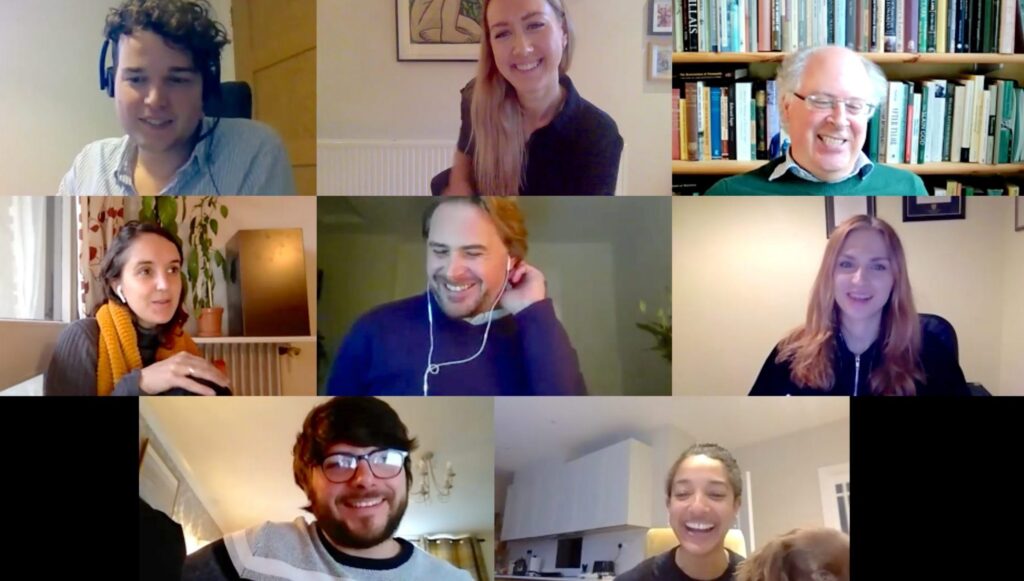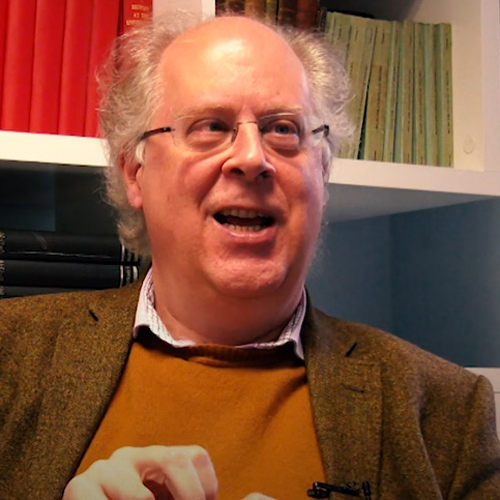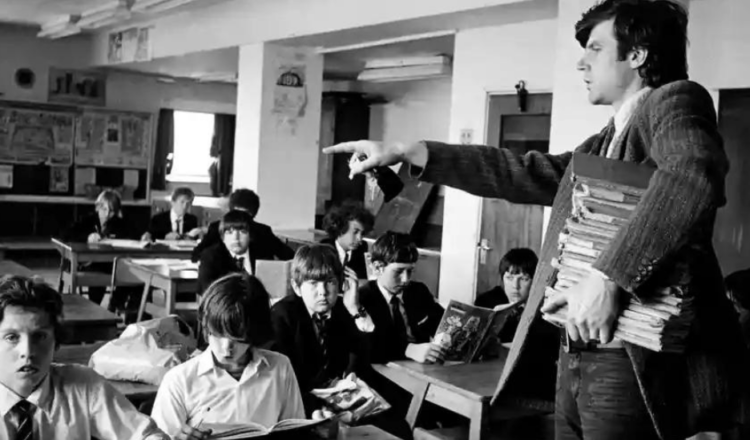Most of us don’t think of our schools as historical subjects in themselves.
Apart from the tiny minority of us whose schools were founded in centuries past, mostly they’re pretty modern places where History is taught, not experienced.
But this isn’t true for modern history – quite the contrary.
Most people in the UK didn’t even go to primary school until it was made compulsory around 1880.
And most people didn’t go to secondary school until it was made compulsory after 1945.
And yet, since 1945, schools have become the most important institutions of the welfare state – and in some ways the most important institutions in our lives.

They’re the places we learn to become adults, where we acquire a peer group, where we learn about our society, where we form lasting identities and where we embark on a career trajectory.
Schools have taken on these roles from churches, workplaces, communities and, in many respects, families.
And they’ve also become crucibles of social change – where new norms and values are cooked up and where the older generations (parents and teachers) seek to regulate the young, but also are forced to learn from them.
So everyone’s school, no matter when it was founded, has been a key site for many of the revolutionary social changes of the past few generations – from rising aspirations and social mobility in the 1950s and 60s to new ideas about gender and sexuality in the 1970s and 80s and new ethnic and multicultural identities in the 1980s and after.
Now a team of academic historians and History teachers have put together a set of teaching resources – aimed squarely at modern British history at KS3, but applicable earlier and to relevant GCSE and A-level courses – showing how the history of universal secondary education can be used to teach the history of these great social changes in postwar Britain.
Funded by the Economic and Social Research Council on a five-year grant, the Secondary Education and Social Change in the UK since 1945 (SESC) project – led by Cambridge historians Peter Mandler, Chris Jeppesen and Laura Carter – has been dredging up an incredible panoply of primary sources revealing histories of school life in secondary schools in all four nations of the UK.
Most schools deposited records in local record offices – logbooks, admissions registers, PTA and governing body minutes, punishment books, photo albums, memorabilia, school magazines, newspaper cuttings.
Many stopped doing this when they entered the digital era at the turn of the century, but their local record offices would be delighted to receive deposits of digital material.
Social-scientific surveys – notably the famous birth cohort studies which began in 1946 and have followed the lives of representative samples of Britons from birth – are packed full of questionnaires, essays, diaries and reports revealing what young people were experiencing at school and what they thought about it.
The birth cohort studies mean we can also connect their school lives with their backgrounds and their later lives.
Social media brings together old schoolmates for reminiscences.
In Scotland, school-leavers were routinely surveyed about their experiences before later experiences overlaid and coloured them.
Documentary filmmakers regularly dropped in to report on new types of school and strange new behaviours like long hair, psychedelia and video games.
Out of these highly diverse materials SESC hopes to write the first ever comprehensive history of secondary education in this country: why did it matter that for the first time everyone went to secondary school?
But SESC was always designed not only to use these materials to write a history, but also to help teachers to use them to teach History.

So the SESC historians, led for this part of the project by another Cambridge historian, Annie Thwaite, have teamed up with secondary teachers Hannah Cusworth, Molly Navey, Jonny Sellin and Andrew Stacey-Chapman to produce sets of resource packs aimed at teaching the history of postwar social change through the history of secondary schools.
Aimed squarely at KS3 but adaptable to earlier years and to relevant GCSE and A-level courses, the resource packs contain little treasure-houses of primary materials – from plans of school buildings to clips of ethnic-minority pupils being bussed into predominantly white schools, to samples of homework and timetables and beyond.
They have been carefully scaffolded by these experienced teachers into lesson plans with enquiry questions about how changing structures of and attitudes to social class, gender and sexuality and race have played out in schools over the second half of the 20th Century, and how everyday life in school has itself changed in facilities, discipline, homework, uniform and school meals.
Each resource pack is accompanied by video interviews with specialist historians, talking through the sources and exploring how they have been harnessed to wider conclusions about social change in modern Britain.
They are now available to download for free – with additional, introductory material guiding teachers through the packs – on the SESC website.
Download Resources
But every teacher (and every student) can be their own historian.
An additional resource offered is a guide to researching the history of your own school in local archives.
SESC hopes this will encourage teachers and students to add to their research, to tailor their approach to local circumstances, and to unearth more of the incredible resources for local history lying under-used in county, city and local archives.
If this inspires your school to resume collecting materials for its own history, and making those materials available to future historians, so much the better.


Peter Mandler is Professor of Cultural History at the University of Cambridge and Director of the Education and Social Change Project based at Cambridge.





